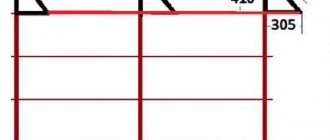How to store spices
It is optimal to store spices according to their expiration date. The fresher the herbs and seeds, the more aromatic they are and contain more nutrients. It is best to take spices not in mixtures, but in their natural form - dried leaves, dried seeds, natural cinnamon bark, vanilla pods, etc. To enhance the taste, adherents of Indian cuisine roast spices in a frying pan, having previously crushed the ingredients of the seasoning.
Grinding spices is also a matter of individual choice. Some people use ground spices right away, some use a mortar, some use an electric coffee grinder. As for herbs, not many people will be able to notice the difference between freshly ground and ground a week ago. Spices like nutmeg actually work much better when grated a little at a time for each dish. Dried and fresh herbs differ in taste; many housewives store chopped fresh herbs in the freezer. The choice is yours - it's your kitchen.
The only thing that lovers of fancy dishes and ordinary cooking will agree on is that spices must be stored in a dark, dry place, preferably tightly closed. Of course, jars made of glass or metal are best, but a battery of jars does not always fit in the kitchen. If a package with a spice does not have time to open, there is nothing left there - such spices can be stored in their original bags in tightly closed boxes. Flavorful herbs and spices that you usually don't use much can be stored in jars, but do not forget about the storage time.
Or maybe a stand?
The stand is an ideal option for lovers of classic kitchen interiors. You don't have to hang anything on the wall or on the outside of the cabinet. Such a stand can comfortably “settle” on the countertop, taking up a minimum of space and ensuring maximum comfort in the culinary process.
The stand is quite convenient, since it does not need to be hung anywhere.
Most often, it is made of natural wood. This design not only makes the design convenient, but also stylishly complements almost any interior design.
Usually the stand is made of natural wood.
By the way, you can also place a spice rack on a windowsill or in a closet. The shapes of the structures are very diverse: from the classic rectangular, to round, or in the form of a pyramid.
The stand can also be placed in a closet.
DIY spice racks
A video selection of master classes in which masters show how to make a spice rack with your own hands.
Cool spice rack
Roman Forest showed how he makes the simplest version of a spice rack with his own hands. He used 5 elm boards. Tools: combination machine, surface planer, belt sander, router, eccentric sander.
DIY Vintage Tabletop Spice Rack
Oleg Kidanov, in a video on his channel, showed how he made a shelf for six 200-gram spice jars:
Condiment cabinet on kitchen unit
Making a separate neat cabinet for seasonings and other small items on the side of the kitchen furniture is another wonderful idea that will bring additional comfort and a touch of originality to the kitchen interior.
A shelf without a back wall is made from wooden boards of the required size. The door frame is assembled from wooden planks using metal corners. An openwork metal mesh is attached to the underside of the door with a stapler. The door is attached to the shelf using furniture hinges. The product is painted, varnished and mounted on the side wall of the kitchen unit. To make the spice cabinet look even more attractive, it is advisable to choose a beautiful handle for it that will match the overall style and design of the kitchen.
Tabletop spice racks
Buffet shelf
Author: Victoria Petrova
Tabletop spice rack from SpiceLuxe
One of the options is in a tabletop version, which is used for completing spice sets.
Rotating spice racks
The photo of this shelf has long been circulated on the Internet, but I can’t help but add it here, since it is very original. The original source is difficult to find due to the many reposts. Photo taken here: imgur.com/SAscjY9
Another option is with rotation. The source is also not known, but it will be indicated here when it comes across it.
Wooden box shelf
In essence, this is a product made from thin narrow boards; the box will first have to be disassembled, all the nails removed, and the boards thoroughly sanded. A wooden pallet will also work, as long as the width of the planks is slightly larger than the diameter of the jars. The author of the idea used 6 long boards and 2 pairs of short ones, wood glue and nails.
- Between 2 long boards I installed short ones, approximately equal to double the height of the jars. Glued it together and nailed it down with small nails. The long boards are the bottoms of the top and bottom shelves, the short ones are the sides of the bottom.
- I attached 2 more long boards to the side edges of the lower long board and the lower part of the sidewalls from the front and rear, creating the sides of the lower shelf.
- In the same way, I attached 2 boards to the bottom of the top shelf and inserted the side panels between them.
- I painted it, decorated the façade with decoupage and varnished it.
The shelf is light, so it hangs on a cord. If you wish, you can take the idea as a basis and implement your own version, improving the design and assembly method. For example, make the sidewalls solid, and install the sides and bottoms between them, so it’s neater.
They are in every kitchen - the most popular spices
Salt and pepper are found in every home. They are so characteristic that it is very difficult to replace them with something else. However, there are many types of these basic spices, salt is not the same, and not all peppers and paprikas are baked the same. What do they give us, besides the undoubtedly strong taste?
Unique salt
Salt is the oldest and most famous spice; in the old days it was very valuable and was even a means of payment. It was used for preservation and always perfectly emphasized the taste of cooked dishes. Today it is easily available and much abused. Unfortunately, excess refined salt in the body leads to hypertension and kidney disease, among other things.
The best versions of salt are sea salt from seawater evaporation and salt from mine sediments. This salt contains small amounts of minerals: magnesium, manganese, iron, zinc and calcium. Currently, Himalayan salt is gaining great popularity; it contains more than 80 minerals and electrolytes. It is a natural crystalline salt that has been subjected to enormous pressure for millions of years. Salt needs to be limited, but this can be done wisely. It is enough to combine salt with herbs such as garlic, herbal pepper or black cumin. We add less salt, and the flavor of the dishes remains rich.
Paprika and pepper
Paprika improves poor appetite, stimulates the secretion of digestive juice and saliva. It contains large amounts of vitamin C and antioxidants. Pepper fruits can be spicy or sweet depending on how they are cooked. To create the sweet spiciness, the walls and skin of dried peppers are removed, which contain capsaicin, which imparts its characteristic spicy flavor. The flavor of the spice also depends on the heat of the pepper itself, which is why there are many varieties of peppers on the market. Paprika will enrich the flavor of, for example, meats, rice dishes, beans and sausages, and is widely used in Hungarian and Mexican cuisine. In Poland, it is very often used to season grilled dishes and chicken. You should know that due to its pungency, this spice should not be consumed by people suffering from stomach diseases and hemorrhoids.
Pepper as a plant is a tropical vine that grows up to 15 meters, native to India, and the spices we know are made from its fruits. The spicier variety will appear when the fruit is not fully ripe and will then produce proper black pepper. When the ripe red fruits are dried, they produce a milder white pepper. Also, completely green balls are collected, which means these are tender green peppers. Pepper has antibacterial properties, has a pungent flavor due to piperine, and is commonly used on meats and vegetables. It perfectly emphasizes the taste of soups; gourmets say that it goes well with chocolate. Not recommended for people suffering from stomach ulcers and intestinal diseases.
Author: F.E. Isanova
Introduction to decoupage
Let's present a master class on making cereal jars using the decoupage technique.
Let's start decorating. At the bottom of the can we draw a semicircle. This is done for convenience - through such a window the contents of the jar will be visible.
We glue the rest of the jar with white napkins and PVA glue. After drying, you can cover the top of the napkins with white gouache or acrylic paint. This is done so that in the future the applied pattern will not be translucent.
From the napkins with a pattern that were selected and prepared, we cut out the necessary fragments. Carefully remove the two bottom balls of napkins from them.
You can begin the decorating process only after the prepared jar has completely dried. Lubricate the area where the fragment will be glued generously with PVA glue and carefully glue the pattern. Smooth it with a brush liberally moistened with PVA glue.
Using these sequential steps we cover the entire prepared surface of the jar.
We decorate the window. To do this, lubricate the border line with Moment glue and glue the tape.
Let the work dry completely. Of course, you can complete the decorating process here, but we suggest continuing. Using acrylic paints we give the drawing more “life” - we draw the petals and centers of the flowers, as in the photo below.
Again, wait until the jar is completely dry. We finish the work - open it with varnish, preferably acrylic, but construction grade can also be used. After the varnish has completely dried, the jar is ready for use! The lid can be chosen to match the color of the picture! We leave it unchanged, but using imagination, it can also be decorated.
You can also use tin cans of coffee or, for example, baby food for decoupage.
But in this case there is one drawback - there is no way to leave a “window” so that the contents of the jar can be seen. However, there is a way out! You can buy stickers and sign the contents. Or simply print them from the Internet. Below we provide several templates.
The simplest decor for a jar with a metal lid can be simply a beautiful decor with ribbon, braid or fabric around the neck. It will be most effective if the jar is glass. Then we paint the lid with acrylic paint. And the jar is ready!
In the style of minimalism
This decor will allow you to view the contents of the jar in full. If this is not necessary, they can be decorated in any color. This decor does not require much effort and does not imply any skills or abilities.
If you couldn’t find slate paint, there is no need to despair. You can make it yourself by simply mixing black paint and tile grout. For a glass of paint you need 2 tablespoons of grout and a little PVA glue. Stir the mixture thoroughly. If everything is ready, let's start decorating.
Turn clean and dry jars upside down during the day. This needs to be done on old newspapers or unnecessary paper. Then we cover them completely in one tone with spray paint. In our case, white. This way the can will look most impressive in combination with a black sticker. If you decided to leave the jar transparent, skip this point.
Another example of a simple decor for spice jars can be prepared jars with inscriptions on the ropes. But the inscription needs to be processed. This can be done using construction or acrylic varnish, or pasted over with wide tape on both sides.
Another beautiful and original solution could be decorating a jar with decoupage.
The manufacturing process is very simple. Using PVA glue, glue several balls of napkins onto a clean jar. Let it dry. Meanwhile, remove the 2 inner balls from the decorative napkins and cut out the decorative elements. Carefully cover the jar with elements and smooth it with a brush with glue. Let the jar dry completely and cover it with glue. The spice jar using the decoupage technique is ready.
There are many decor options. From simple painting of lids, gluing stickers to decorating with textiles, artificial flowers, polymer clay, strands, ropes, beads, pearls and everything you can imagine.
We will provide several examples of varying complexity for inspiration.
It’s very easy to create beauty and comfort with your own hands from simple materials! The main thing is not to be afraid of experiments. Everything will definitely work out!
Requirements for jars for cereals
When considering containers when purchasing, you need them to meet certain requirements:
- the lid should fit tightly to the jar;
- you need to take into account the number of family members: for a large family you will need large containers, and for a small family – small capacity containers;
- when choosing a material, you need to know that low-quality plastic has its own unpleasant odor, which can easily be transferred to cereals; Containers made of wood and metal retain the odors of the previous product for a long time;
- containers for cereals do not have an expiration date;
- the container should have a wide neck so that it is convenient to wash;
- preference should be given to tall containers, since wide cans take up all the space below, and you can’t put a container on top, since it, like the bag you want to put on top, will constantly fall;
- In addition to the height of the container, you also need to choose its shape: the ideal option is a rectangular product.










